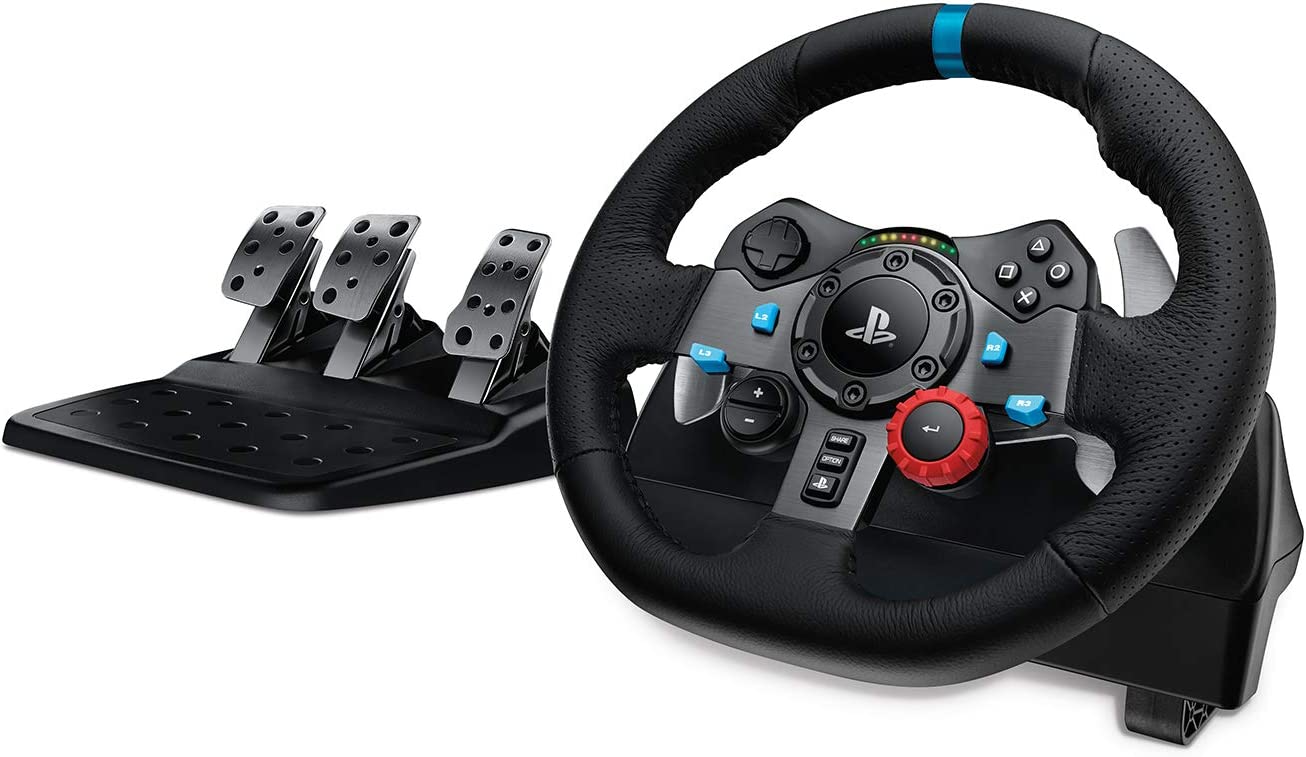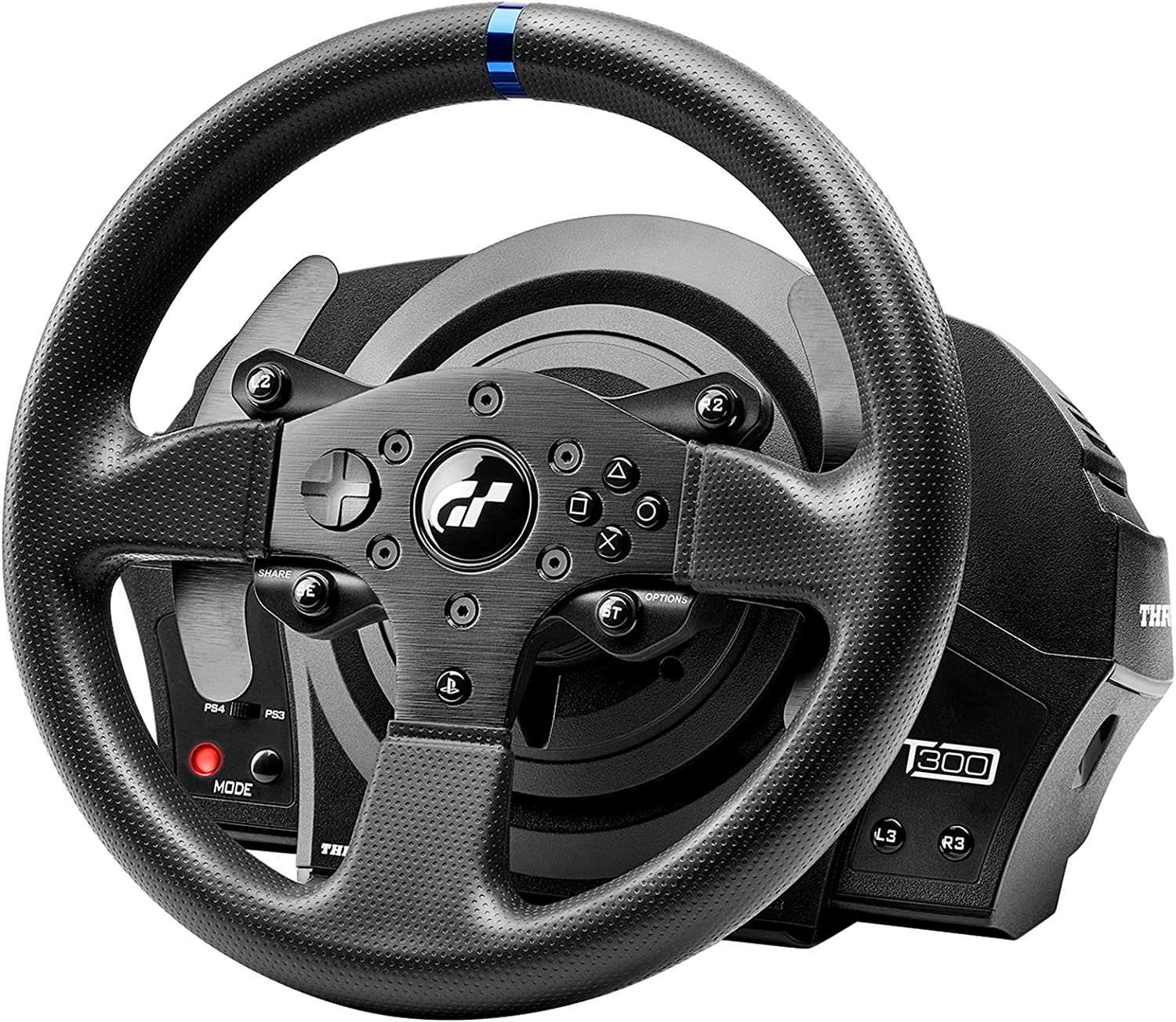Sometimes, after hours of racing with a controller, you hit a wall—figuratively, and maybe even literally in-game. There’s only so far you can go without that tactile feel, the force yanking the wheel in your hands, the pressure on a brake pedal that actually fights back. That’s when the obsession starts: you need a real racing wheel. And not just any wheel—you want the one that’s going to make Gran Turismo or Assetto Corsa feel like you’re strapped into a real cockpit. That’s when you land on two heavyweights: the Logitech G29 and the Thrustmaster T300 RS GT.
We’ve been down this rabbit hole. We’ve mounted these things to desks, calibrated, recalibrated, cursed during firmware updates. And we’ve felt every inch of virtual asphalt. Let’s cut through the noise and look at how these two wheels compare in every way that matters—how they feel, how they handle, and what they can actually deliver in the middle of a race.
Look and feel: where leather meets rubber
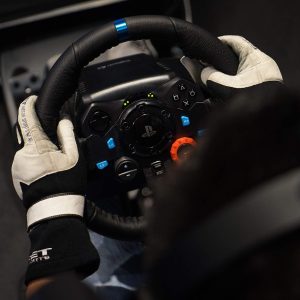
Not everything is about performance—first impressions matter, especially when you’ve spent a few hundred bucks. The Logitech G29 greets you with a hand-stitched leather wrap and a sturdy metal faceplate, giving off that “real car” vibe right from the box. It’s compact—27 cm in diameter—but doesn’t feel toy-like. The leather adds a smooth, tactile grip that holds up over longer sessions without your palms feeling like they’ve run a marathon.
Now, the Thrustmaster T300 RS GT doesn’t try to look premium—it feels like it means business. Its 28 cm diameter wheel is wrapped in textured rubber, and yes, we were skeptical at first. But in use, that rubber grip becomes addictive. It holds up better when things get sweaty. It also gives off more of that rugged “racing garage” energy rather than “luxury sedan.”
What sets the T300 apart? Modularity. You’re not locked into one wheel—swap in a Ferrari GTE rim or the Alcantara 599XX EVO whenever you want. The G29? What you see is what you get. So while the Logitech nails the out-of-the-box polish, Thrustmaster invites you to evolve.
Force feedback: when resistance feels real
This is the heart of the whole experience. If the force feedback is off, the immersion dies—simple as that. The G29 uses a dual-motor gear-driven system, and while it delivers solid torque, you always feel the gears grinding just beneath the surface. There’s a certain mechanical grit that reminds you this is a simulation, not a real wheel. It’s noisy, it’s clunky, but it gets the job done—especially for casual racers.
Switch to the T300 RS GT and the difference is immediate. Its belt-driven, brushless motor delivers smoother, more fluid feedback. No grinding. No clanking. Just a consistent stream of resistance that reflects the tarmac under your tires. And that wider rotation range—1.080 degrees compared to the G29’s 900—gives you more room for precision. It’s like shifting from arcade to sim with one plug.
What’s more, the T300’s feedback feels more dynamic. You feel the weight shift in corners, the loss of traction mid-slide, the subtleties in elevation. It’s less about brute force and more about nuance. And that nuance keeps you dialed in lap after lap.
Pedals: pressure, progression, and potential
We always tell people—don’t sleep on the pedals. They might look like a secondary element, but they make or break the realism. Logitech gives you a solid start. The G29’s pedal set includes a progressive brake that mimics real-world hydraulic pressure, and you get a clutch too. But that’s about where the magic ends. There’s no height or resistance adjustment, and while the pedals feel decent underfoot, they lack that customizable edge.
Now brace yourself—the T300 RS GT’s T3PA pedals are a different beast. The build feels more substantial. You can adjust the spacing, the height, and even the resistance thanks to the included conical brake mod. That last part makes a surprising difference: press the brake and instead of bottoming out, you feel a wall of resistance. Like stepping on a real brake system.
And because of the finer input resolution, you get better control over throttle modulation and brake points, especially useful in sim settings where one twitch can mean spinning out.
Compatibility and how far you can take it
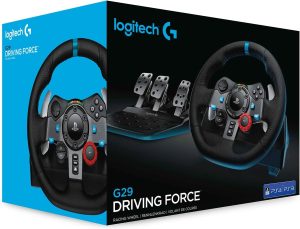
Let’s talk setup ecosystems. Because let’s face it, this isn’t just about the wheel you buy now—it’s about where you can take it later. The G29 is PlayStation and PC-friendly, but if you’re on Xbox, you’re out of luck here—you’ll need the G920 instead. And even then, the ecosystem is limited. There’s a Logitech shifter, and… that’s pretty much it.
Thrustmaster keeps things tidy too. The T300 RS GT supports PlayStation and PC—but no Xbox, period. So same limitations there. But once you’re in the Thrustmaster zone, the options explode. Fancy a rally-style wheel? Want a sequential shifter? Add the TH8A or upgrade to T-LCM pedals for load cell braking. The ecosystem is deep, and it’s been growing for years.
If customization and future-proofing matter to you, Thrustmaster is the one that keeps the door open. Logitech’s more like “this is the kit—hope you like it.”
Noise and temperature: silence is speed
Look, we’ve all had that moment—3 a.m., racing through Spa, trying not to wake anyone up. And then the G29 kicks in with its grinding gears. It’s not obnoxiously loud, but it’s there, and once you notice it, you can’t un-hear it. The gear-driven system just isn’t subtle.
The T300 RS GT is a lot more discreet. Its brushless motor isn’t just smoother—it’s significantly quieter. You can run long stints without it getting hot or developing weird clicking sounds. It runs cool and calm, which is exactly what you want when you’re trying to stay locked in for an hour-long endurance race.
Steering precision: input matters
Both wheels can get you around the track, but the difference in steering feel and responsiveness is like comparing a scalpel to a steak knife. The G29 has 900 degrees of rotation, which is enough for most mainstream racing games. But it’s not as quick to react. There’s a noticeable lag on finer adjustments, and that affects how confident you feel when fighting oversteer or threading through chicanes.
The T300 RS GT steps things up with 1.080 degrees of rotation and higher-resolution sensors. It reacts quicker, with less deadzone, and gives you that feeling of “I moved my hand two millimeters, and the car followed.” That’s critical when you’re chasing lap times and shaving tenths.
It’s also less fatiguing. You’re not wrestling it—just guiding it.
The extra bits that sneak up on you
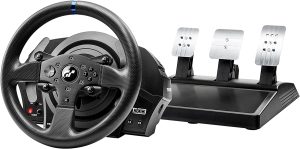
It’s easy to focus on the big features, but sometimes it’s the small things that define the daily experience. Both wheels have paddle shifters, but the ones on the G29 are metal and clicky—satisfying at first, but they get tiring. The T300’s paddles are larger and softer on the pull. It feels more like a sports car than a toy.
One thing that surprised us: the G29 has shift indicator LEDs built into the wheel, which can be handy in games that don’t show RPM as clearly. It’s a minor feature, but one that we missed when switching back to the T300.
Still, those LEDs aren’t enough to tip the scale when you start to feel the advantages of Thrustmaster’s flexibility—whether it’s the better motor, the wider pedal options, or the interchangeable wheel rims.
Final thoughts: where the experience splits
Alright, let’s put it bluntly—the Thrustmaster T300 RS GT is the more immersive, flexible, and simulation-focused option. And not just by a hair. It’s a leap in experience. The smoother force feedback, the quieter operation, the extra degrees of rotation—it all starts to stack up. Not to mention, those modular add-ons make it a platform you can keep building on.
That said, the G29 isn’t trash—it’s just safer. If you want a polished, well-built wheel with a leather finish and a straightforward setup, it delivers. But you’ll probably hit its ceiling faster. Once you’ve grown used to the feel, you’ll start craving more precision, more realism, and that’s where it starts to feel limited.
We thought the G29 was going to be enough when we started. We liked its look, the leather, the clean interface. But after two months with the T300 RS GT, going back to the G29 felt like going back to training wheels. There’s something in the weight, the silence, the detail of every bump and slide that you only get from Thrustmaster’s setup.
Still, if you’re on Xbox? Well, you don’t even have a choice here. That’s a whole other story.
But for those racing on PlayStation or PC and wondering which wheel really feels like the real thing? Let’s just say we’re not going back to the gear-driven life anytime soon.

